 NYC-based PIRA Energy Group believes that China’s crude imports soared while India’s oil demand surges ahead. In the U.S., a large crude stock build overwhelms a product inventory decline. In Japan, crude runs increased, imports fell back and stocks drew. Specifically, PIRA’s analysis of the oil market fundamentals has revealed the following:
NYC-based PIRA Energy Group believes that China’s crude imports soared while India’s oil demand surges ahead. In the U.S., a large crude stock build overwhelms a product inventory decline. In Japan, crude runs increased, imports fell back and stocks drew. Specifically, PIRA’s analysis of the oil market fundamentals has revealed the following:
China’s Crude Imports Soared While India’s Oil Demand Surges Ahead
Oil prices will consolidate recent gains and then move higher in a step ladder fashion as price must inevitably be high enough to remunerate new supply to meet growing demand. India’s oil demand growth is likely to keep pace with refinery capacity additions through 2017, which will translate to a leveling off in net product exports. China’s teakettles lift crude imports to new record high. Asian imports of U.S. LPG are set to rise, helping to meet robust demand growth partly driven by new PDH plants in China and helped by improved economics after the Panama Canal expansion. Asian margins should stay healthy through midyear before easing as gasoline season winds down and rising crude prices eat into margins.
Resilient WCSB Exports Provide Little Relief for Rebalancing North American Supply
Reeling from a year of low prices and a warm withdrawal season, Canadian producers have further reduced capital expenditure budgets in the face of weak pricing. Despite reduced production budgets, declining rig counts and growing layoffs in the patch, Canadian producers have reported strong production numbers over the past several months — notwithstanding weak in-basin pricing and glutted WCSB storage levels. There are a number of exogenous factors that suggest this resiliency will likely continue, with front-loaded Canadian production gains and limited delivery options fortifying gas-on-gas competition in western Canada as well as in the U.S., particularly the Midwest. All told, relatively robust exports from Canada will provide little help in rebalancing the U.S. market.
Italian 2017 Prices Under Pressure, as Enel Catching Up with Forward Hedging
During its presentation to the financial community on March 23, Enel indicated that the open position for 2017 is relatively wider, having hedged only 22% of its Italian coal and gas generation, instead of 35% for the year ahead in 2015. As Enel hedges a higher portion of their fleet in the upcoming months, we can expect further weakness for 2017 Italian prices. However, there is the possibility — more bullish for prices — that Enel's expected total output for 2017 in Italy might be lower than in prior years, as a result of the announced capacity closures.
Coal Market Shifts Lower; Labor Strike Premium Finally Priced Out
The coal market moved notably lower last week, with falling oil prices, a rising U.S. dollar, and further distance from the perceived threat of a labor strike providing the downward impetus for pricing. API#2 (Northwest Europe) prices in particular moved lower, as the labor strike risk was finally priced out of the market. Interestingly, API#4 (South Africa) prices moved up marginally last week, widening their premium over FOB Newcastle (Australia) pricing. PIRA retains the belief that this premium is unsustainable, particularly as India’s import demand continues to wane, although weak dry bulk fright rates aid South Africa coal’s competitiveness into the Asian market.
North American SO2/NOx Quarterly Update
2015 emissions for CSAPR SO2 and NOx markets were below program caps, allowing for bank builds. The seasonal NOx market is looking forward to EPA’s final CSAPR Update rule, which would set tighter limits beginning in 2017. PIRA’s analysis shows a pathway for compliance between expected retirements and optimizing existing controls, although a few states may still exceed their budgets. PIRA does not expect the Supreme Court to halt MATS implementation; coal retirements this year are clustered in April, when the first MATS extension expires. Litigation over EPA’s Regional Haze FIP for TX has commenced, with EPA attempting a venue change; meanwhile, EPA has now targeted TX coal/lignite units for one-hour SO2 compliance. The 2015 Ozone NAAQS, finalized in October, are also facing legal challenges.
Egyptian Gas Producers Look for Higher Prices
BG, now a subsidiary of Royal Dutch Shell, is negotiating with Egyptian General Petroleum Corporation (EGPC) to price gas higher in the 9B concession area in Egyptian Mediterranean waters. A source close to the negotiation process said that the BG, with a representative from Royal Dutch Shell, leads the negotiations regarding pricing of gas produced from 9B and agreed on the price with a condition of paying $1bn in dues to BG. He added that the Egyptian Ministry of Petroleum did not provide an answer regarding the payment of financial dues nor determine the amount they can pay and the timing of it.
Sluggish Global Manufacturing, But Improving Financial Markets
Globally, consumer spending data have been constructive, but manufacturing data have not. The former is expected to eventually bring about a turnaround for the latter. But that will not happen imminently, according to this week’s data releases.
Argo Terminal Full and Companies Told to Sell Stored Product in Excess of Contracted Volume
U.S. ethanol output declined to the week ending March 18 as plants are finally curtailing production due to near-record inventories. Total stocks declined, though PADD II inventory was up and the Argo terminal was full.
Big Reports Ahead
Agreement and consistency are two words rarely associated with Quarterly Stocks reports, except this go round. With 13+ billion bushels of on-farm storage available, getting a handle on that segment of stocks is always difficult, but for the most part there seems to be a general agreement over a March 1st corn stocks number around 7.8 billion bushels, so to with the soybean stock estimate of 1.55 billion.
Large U.S. Crude Stock Build Overwhelms Product Inventory Decline
A shockingly large crude inventory was driven by the highest weekly crude imports since the start of 2015. Total product stocks had a net draw. Looking forward, we expect reduced refinery maintenance and overall lower crude imports to limit crude builds and, eventually, drive crude stock draws. Gasoline demand remains strong, while distillate demand weakened, and this drives our expectation of gasoline stocks outdrawing distillate stocks this week.
Should We Expect Lower North Sea Production Going Forward?
Given that gas prices are down by more than a third year-on-year, we can and do expect some production turndowns in the North Sea. These cuts will match similar patterns emerging in Russia, Algeria, and the Netherlands, which are going beyond the normal seasonal pattern that typically is shaped to match changes in seasonal demand.
Dry Bulk Freight Outlook Remains Bleak Despite a Recent Steel - and Iron Ore-Driven Uptick
The near-term freight rate outlook continues to be grim. The FFA market, following the jump in Chinese steel and iron ore prices, marked up paper Cape rates at the start of the second week in March. However, as the physical market weakened, the rate gains were quickly marked back down. We have a neutral outlook for rates in 2Q and 3Q. However, we continue to be mildly bullish on Cape rates in 4Q. We expect more iron ore supply coming into the market in late 2016 driving down iron ore prices and making imported iron ore more competitive than Chinese domestic iron ore.
Global Equities Mixed
Global equities posted an aggregated modest decline of 0.5%, week-on-week. In the U.S, many of the tracking indices gave ground, though utilities moved higher and technology was fractionally higher. Many of the longer-term trends are still looking constructive. Internationally, all the tracking indices lost ground, though the Japanese index held up the best.
4Q15 U.S. Producer Survey: First Quarter-on-Quarter Losses in Two Years; More to Come
U.S. producers grew production through end-2015 despite increasingly challenging market conditions. That said, the gas price collapse in 4Q15 did drive the first quarter-on-quarter declines in more than two years. Although the completion of several major infrastructure projects in 4Q15 provided low-cost Appalachian producers access to out-of-basin markets, the drop in Gulf Coast cash prices from ~$3/MMBtu at midyear toward $1.50 by year end proved to be more influential. Both the companies surveyed by PIRA (“PIRA Group”) and the remaining non-group companies suffered quarter-on-quarter losses amounting to ~0.8 BCF/D. Moreover, the impact of expanded budget cuts and rig declines raise the odds of year-on-year losses ultimately taking hold.
Asian LPG Outperforms, Further Hampering Regional Demand
Asian LPG logged the best price performance of the three key regions last week. Propane prices improved by a strong 4.5% to $347/MT. Butane gained to $380/MT. Inexpensive naphtha continues to hamper LPG petrochemical demand. With propane just $20 under regional naphtha and butane near parity with the refined product, cracker economics continue to favor minimizing LPG in the feedstock pool.
Corn’s Bull Case
It would hardly be a stretch to say that market participants are not exactly thrilled with the corn market. If you’re a fund that’s been short since half past forever, the lack of movement is the reason for some complacency, but you’d still like to turn a profit. If you’re a producer who’s still staring at a negative cash flow as a result of this continued pricing, it’s the cause of some major consternation.
Ethanol Prices and Manufacturing Margins Lower
U.S. ethanol prices pulled back March 18, with Chicago prices giving up all of their gains for the week. Manufacturing margins declined slightly, as corn costs rose while co-product DDG values softened.
Japanese Crude Runs Increased, Imports Fell Back and Stocks Drew
Crude runs posted a third straight week of increase and have now almost fully recovered to their late-February level of 3.5 MMB/D. Crude imports fell back yet again and crude stocks drew 2.5 MMBbls. Finished product stocks also drew a bit with gasoline lifting aggregate demand. Margins remain good. Cracks were higher week-on-week and then eased in the last few days.
China Imports Lag Contracts, But Growth Is Finally Evident
What happens when the world’s biggest growth market fails to keep up with the growth in supply dedicated to that particular growth market? We are about to find out with the commissioning of the first train of the three-train 21.5 BCM/Y Gorgon project, the fourth Australian project to come on stream in 15 months.
Financial Stress Falls
For the sixth straight week, the S&P 500 rose on a weekly average basis, but it eased modestly from Friday-to-Thursday (almost all global financial markets were closed for Good Friday). All the other key indicators again improved. The most notable indication of easing stress has been the decline in the yield of BAA rated corporate bonds. The U.S. dollar has been mixed lately; commodities continue to gain, both overall and ex-energy; and the Japanese bond yield for 2-year and 10-year maturities continues to move deeper into negative territory.
Tight Oil Operator Review
As expected, activity slowed across all three of the major U.S. shale plays in 4Q15 given persistent weak oil prices. The outlook for 2016 looks further challenged on mounting financial constraints, not least of which may result from borrowing base redeterminations in April/May. Capex guidance for 2016 is down 50% from 2015, on top of the 40% year-on-year reduction in 2015. In the Bakken and Eagle Ford, operators are guiding towards a sharp decline in drilling and completion activity, and production guidance in these plays is down 8-12% year-on-year for 2016. In the Permian, drilling activity is also slowing, but operators still expect production growth (~3%). Most operators plan to draw down on DUCs, although two of the largest operators in the Bakken are building.
Seasonal Demand Lulls Shifts Trade and Pricing Patterns
As the market prepares for a 10% boost in volumes this year, it is also bracing for a new reality on the buy side. This reality is that the top buyers of LNG historically are buying proportionally less LNG than they did at the beginning of the decade. Such a shift has major implications for balancing the market in the current supply-laden environment, as it essentially puts the burden (or opportunity) on the rest of the buyers to soak up the volumes.
The Next Refinery Challenge: Meeting Tighter Sulfur Standards for Worldwide Transport Fuels
Lowering the sulfur levels in transportation fuels has been a key goal of environmental authorities in many parts of the world. Much has already been achieved, with the European Union and Japan at 10 ppm sulfur for both gasoline and diesel fuel for many years — 10 ppm is as close as practical to zero, an environmental target. These programs will broaden this year and next in some key global markets.
Front-loaded Concessions Required to Limit U.S. Seasonal Build?
The year’s first injection failed to elicit much reaction from the market — either from buyers, in response to the below consensus build, or from sellers, calling attention to the premature end of the heating season. Notwithstanding the probable noise accompanying next week’s futures contract expiry, prices will likely range close to seasonal lows until clearer signs of rebalancing emerge. And at present, the fundamentals are simply not cooperating.
The information above is part of PIRA Energy Group's weekly Energy Market Recap - which alerts readers to PIRA’s current analysis of energy markets around the world as well as the key economic and political factors driving those markets.


 NYC-based
NYC-based 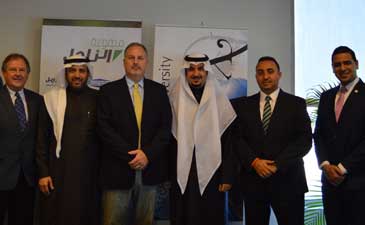 UTEC Survey
UTEC Survey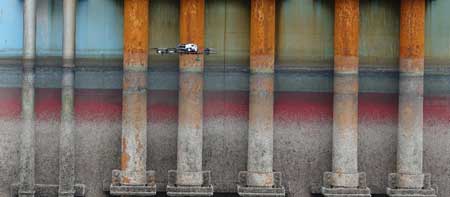 New guidance approach supports industry in the safe and effective deployment of next generation drone and unmanned aircraft systems (UAS) technology that can significantly improve productivity gains through reducing risk exposure, survey times and in-service inspection costs of offshore, marine and onshore infrastructure.
New guidance approach supports industry in the safe and effective deployment of next generation drone and unmanned aircraft systems (UAS) technology that can significantly improve productivity gains through reducing risk exposure, survey times and in-service inspection costs of offshore, marine and onshore infrastructure.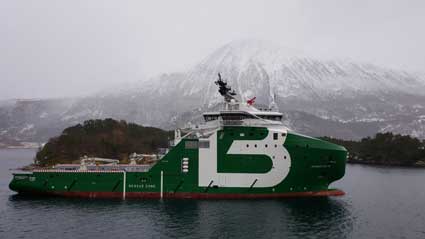 Capable of intervening in the most complex environments, she boasts a bollard pull of 307 t
Capable of intervening in the most complex environments, she boasts a bollard pull of 307 t On March 16th, the UK government effectively abolished the Petroleum Revenue Tax (PRT) and reduced the supplementary charge tax from 20% to 10% - a measure which could result in ~£1bn tax break over the coming five years. The government’s aim is to encourage investment in infrastructure and new developments, as well as support production from existing fields in the UKCS. However, is this just too little too late?
On March 16th, the UK government effectively abolished the Petroleum Revenue Tax (PRT) and reduced the supplementary charge tax from 20% to 10% - a measure which could result in ~£1bn tax break over the coming five years. The government’s aim is to encourage investment in infrastructure and new developments, as well as support production from existing fields in the UKCS. However, is this just too little too late? Conductor Installation Services Ltd (CIS)
Conductor Installation Services Ltd (CIS)
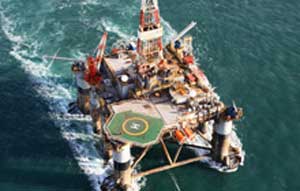 Ocean Guardian. Photo Credit: Diamond Offshore
Ocean Guardian. Photo Credit: Diamond Offshore Aker Solutions
Aker Solutions Prysmian Group
Prysmian Group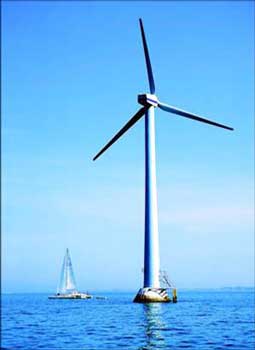 Image credit: BOEM
Image credit: BOEM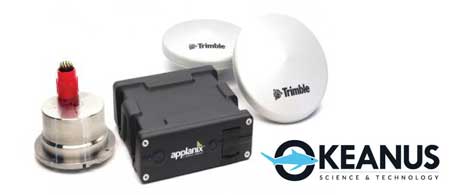 Okeanus Science and Technology (Okeanus)
Okeanus Science and Technology (Okeanus)
 MOFCOM approval represents the last major closing condition to the proposed merger. As a result, the parties intend to close their transaction on April 1, 2016.
MOFCOM approval represents the last major closing condition to the proposed merger. As a result, the parties intend to close their transaction on April 1, 2016.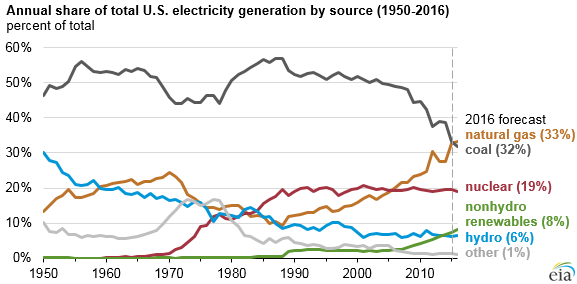
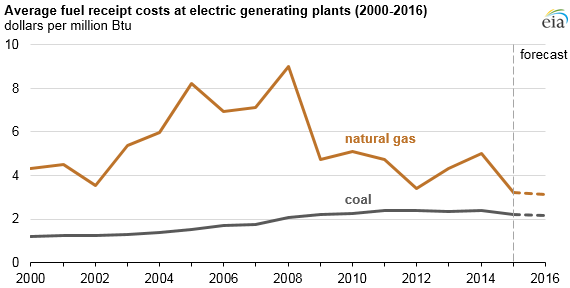
 Leading United Arab Emirates shipyard
Leading United Arab Emirates shipyard 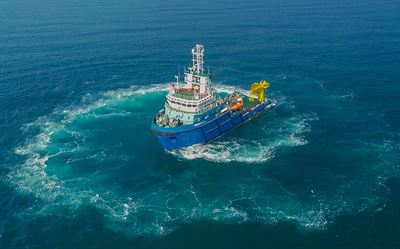 These range from three recently delivered work crane boats for Kuwait Oil Company - optimized for duties such as heavy lifting, oil-pollution control, SPM hose handling, and supply to remote areas – to two modified 42 meter long crew boats (FNSA-3 and FNSA-4) for Fujairah National Shipping Agency. The latter vessels are capable of speeds in excess of 30 knots and customized to execute operations such as security duties, fast transportation of offshore personal and cargo, and the rapid supply of fuel and freshwater.
These range from three recently delivered work crane boats for Kuwait Oil Company - optimized for duties such as heavy lifting, oil-pollution control, SPM hose handling, and supply to remote areas – to two modified 42 meter long crew boats (FNSA-3 and FNSA-4) for Fujairah National Shipping Agency. The latter vessels are capable of speeds in excess of 30 knots and customized to execute operations such as security duties, fast transportation of offshore personal and cargo, and the rapid supply of fuel and freshwater. INDUSTRY CAUGHT IN CATCH 22, SAYS DNV GL
INDUSTRY CAUGHT IN CATCH 22, SAYS DNV GL